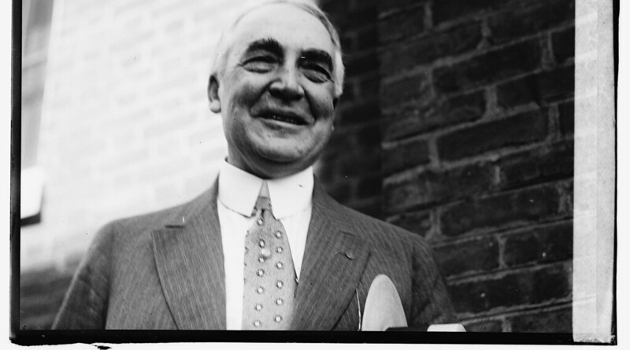I’ve written about President Warren Harding’s under-appreciated economic policies.
He restored economic prosperity in the 1920s by slashing tax rates and reducing the burden of government spending.
I’ve also written many times about how President Franklin Roosevelt’s economic policies in the 1930s were misguided.
And that’s being charitable. For all intents and purposes, he doubled down on the bad policies of Herbert Hoover. As a result, what should have been a typical recession wound up becoming the Great Depression.
But I’ve never directly compared Harding and FDR.
Ryan Walters, who teaches history to students at Collins College, has undertaken that task. In a piece for the Foundation for Economic Education, he explains how Harding and Roosevelt took opposite paths when facing similar situations.
Both men came into office with an economy in tatters and both men instituted ambitious agendas to correct the respective downturns. Yet their policies were the polar opposite of one another and, as a result, had the opposite effect. In short, Harding used laissez faire-style capitalism and the economy boomed; FDR intervened and things went from bad to worse. …Unlike FDR, who was no better than a “C” student in economics at Harvard, Harding understood that the old method of laissez faire was the best prescription for a sick economy.
Here’s some of what he wrote about Harding’s successful policies.
America in 1920, the year Harding was elected, fell into a serious economic slide called by some “the forgotten depression.” …The depression lasted about 18 months, from January 1920 to July 1921. During that time, the conditions for average Americans steadily deteriorated. Industrial production fell by a third, stocks dropped nearly 50 percent, corporate profits were down more than 90 percent. Unemployment rose from 4 percent to 12, putting nearly 5 million Americans out of work. …Harding campaigned on exactly what he wanted to do for the economy – retrenchment. He would slash taxes, cut government spending, and roll back the progressive tide. …Under Harding and his successor, Calvin Coolidge, and with the leadership of Andrew Mellon at Treasury, taxes were slashed from more than 70 percent to 25 percent. Government spending was cut in half. Regulations were reduced. The result was an economic boom. Growth averaged 7 percent per year, unemployment fell to less than 2 percent, and revenue to the government increased, generating a budget surplus every year, enough to reduce the national debt by a third. Wages rose for every class of American worker.
And here’s what happened under FDR.
Basically the opposite path, with horrible consequences.
FDR certainly inherited a bad economy, like Harding, yet he made it worse, not better, prolonging it for nearly a decade. With the stock market crash in October 1929, the American economy slid into a steep recession, which Herbert Hoover…proceeded to make worse by intervening with activist government policies – increased spending, reversing the Harding-Coolidge tax cuts, and imposing the Smoot-Hawley tariff. …once in office FDR set in motion a massive government economic intervention called the New Deal. …under FDR taxes were tripled and new taxes, like Social Security, were added, taking more money out of the pockets of ordinary Americans and businesses alike. Between 1933 and 1936, FDR’s first term, government expenditures rose by more than 83 percent. Federal debt skyrocketed by 73 percent. In all, spending shot up from $4.5 billion in 1933 to $9.4 billion in 1940. …The results were disastrous. …Unemployment under Roosevelt averaged a little more than 17 percent and never fell below 14 percent at any time. And, to make matters worse, there was a second crash in 1937. From August 1937 to March 1938, the stock market fell 50 percent.
At the risk of understatement, amen, amen, and amen.
Sadly, very few people understand this economic history.
This is mostly because they get spoon fed inaccurate information in their history classes and now think that laissez-faire capitalism somehow failed in the 1930s.
And they know nothing about what happened under Harding.
P.S. What happened in the 1920s and 1930s also is very instructive when thinking about the growth-vs-equality debate.
P.P.S. Shifting back to people not learning history (or learning bad history), it would be helpful if there was more understanding of how supporters of Keynesian economics were completely wrong about what happened after World War II.
———
Image credit: GPA Photo Archive | CC BY-NC 2.0.




